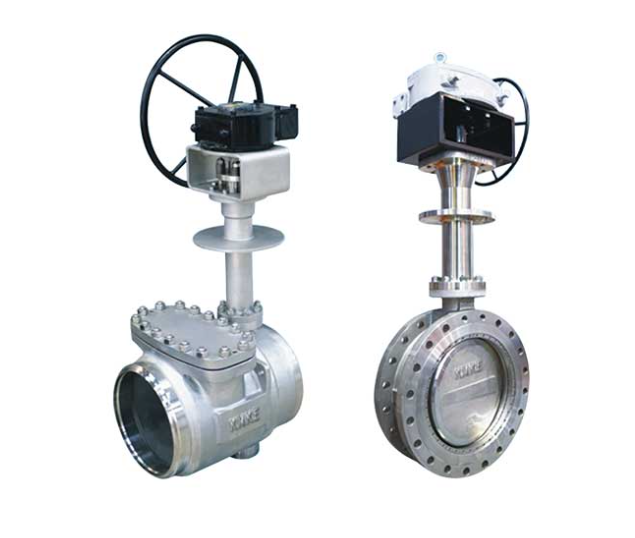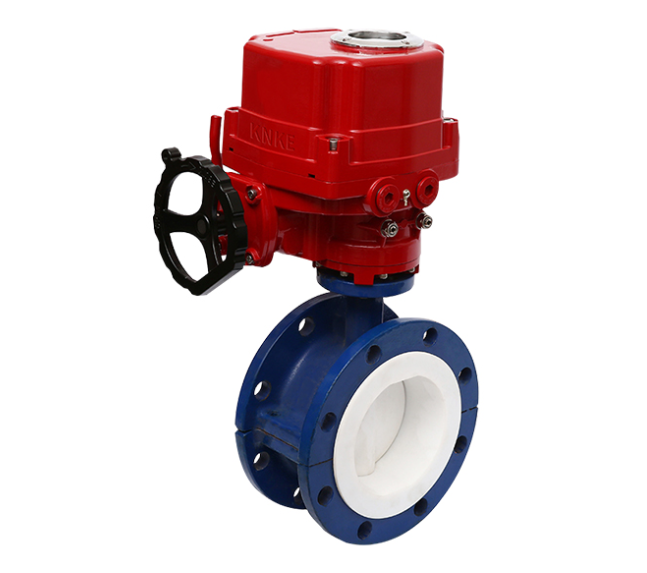Key Differences Between Wafer and Flanged Butterfly Valves and Selection Guide
In industrial pipeline systems, engineers widely use butterfly valves for their simple structure, high flow capacity, and quick opening/closing. Classified by connection methods, they mainly include wafer and flanged types. These two variants differ significantly in structure, applications, and performance. This article compares them by technical principles and usage scenarios to aid engineering selection.
1. Connection Methods: Design Impacts Installation

Wafer Butterfly Valve: Lightweight Clamping Design
Wafer butterfly valves lack flange plates at both ends. Technicians directly clamp them between pipeline flanges using bolts. The design relies on flange clamping force, with annular flanges or gaskets ensuring a sealed fit. This saves flange components, making installation ideal for compact spaces.
Flanged Butterfly Valve: Independent Flange System
Flanged butterfly valves feature built-in flange plates. Their flanges connect directly to pipeline flanges via bolts, requiring gaskets and bolt sets. This independent structure allows individual installation or disassembly, suitable for high-pressure or frequent-maintenance scenarios.
2. Structural Design: Space vs. Strength
Wafer Butterfly Valve: Compact and Lightweight
Wafer valves have thinner valve bodies, matching pipeline flange spacing. This design saves 30%-50% installation space. For example, a DN100 wafer valve has an axial length ≤50mm, versus >100mm for a flanged model. Ideal for dense setups like building pipelines.
Flanged Butterfly Valve: Robust and Compatible
Flanged valves are longer and heavier due to built-in flanges. Their flanges comply with standards (GB, ANSI, JIS), ensuring compatibility with any same-spec pipeline flanges. Thickened flanges enhance structural strength for high-stress applications.
3. Applications: Match to Operating Conditions

Wafer Butterfly Valve: Low-Pressure and Space-Critical
Engineers prefer wafer valves for ≤1.6MPa systems, such as water supply, air ducts, and HVAC. Their sealing depends on flange clamping, risking leaks under high pressure or corrosive media. Typical uses include:
- Indoor water pipelines (DN50-DN300)
- Ventilation system airflow control
- Low-pressure gas on-off control
Flanged Butterfly Valve: Medium/High-Pressure and Reliability
Flanged valves handle ≥2.5MPa pressures, suitable for chemical, petroleum, and fire sectors. Their bolt-clamped seals ensure stability, ideal for:
- Fire sprinkler systems (resisting water hammer)
- Corrosive or high-pressure chemical pipelines
- High-temperature steam pipelines
4. Installation and Maintenance: Convenience Factors
Wafer Butterfly Valve: Simple but Precision-Dependent
Installing a wafer valve involves clamping between flanges and tightening bolts. However, flange parallelism and spacing must stay within ≤2mm tolerance to avoid leaks. Disassembly requires removing the entire valve, with pipeline flanges needing inspection during maintenance.
Flanged Butterfly Valve: Standardized and Independent
Flanged valve installation follows a standard process: fix the valve flange, then bolt it to the pipeline. With 4-8 bolts (depending on specifications), it allows individual disassembly for maintenance. This eases seal or valve plate replacement in frequent-service setups.
5. Sealing and Pressure Resistance: Core Performance
Sealing Principles
Wafer valve seals rely on flange clamping force. Bolt preload and media pressure determine sealing efficiency, risking radial leaks under high pressure.
Flanged valves use bolt-clamped seals, with controllable pressure. High-end models with double/triple-eccentric designs meet API 609 Class VI leakage standards.
Pressure Capacity
Wafer valves typically handle ≤2.5MPa (4.0MPa for special designs), requiring rigid flanges at higher pressures.
Flanged valves withstand ≥6.4MPa, with welded models suitable for >10.0MPa extreme conditions.
6. Cost: Initial vs. Long-Term
Initial Cost
Wafer valves cost 20%-30% less than flanged models, ideal for budget projects. A DN200 wafer valve costs ~$110, versus $135-$160 for flanged.
Long-Term Value
Flanged valves offer lower leakage risks and maintenance needs in high-pressure applications. In chemical/energy sectors, their reliability reduces downtime costs, justifying higher upfront expenses.
7. Selection Criteria: Four Key Factors
- Pressure: Choose wafer for ≤1.6MPa, flanged for ≥2.5MPa, and custom flanged for high-pressure needs.
- Space: Opt for wafer in dense layouts; use flanged for outdoor or maintenance-friendly setups.
- Maintenance: Flanged suits frequent repairs; wafer works for low-maintenance systems.
- Media: Pick flanged for corrosive/particulate media (easy cleaning); use wafer for clean water.
Wafer and flanged butterfly valves suit different needs based on connection design. Engineers should assess pressure, space, maintenance, and media when selecting. Lug-type wafer valves now offer a balance of compactness and bolted stability for niche applications. Prioritizing application compatibility ensures optimal safety, cost, and reliability.
